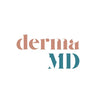PRP face
PRP face
PROCEDURE FOR PRP FACE
After a thorough assessment, we apply a local anesthetic cream to the patient’s face. Meanwhile we draw your blood (just like in any routine blood test), and start preparing the PRP by centrifuging it serially. Once the PRP is ready, we sterilise your facial skin, and then either microneedle or inject the PRP into your skin.
Post-Procedure Care:
Sun Protection: Avoiding direct sunlight to prevent complications.
Gentle Cleaning: Using mild cleansers to keep the treated area clean.
Moisturizing: Applying recommended moisturizers to maintain skin hydration.
Rest and Relaxation: Temporarily limiting strenuous activities.
Follow-up Check-ins: Scheduled appointments to monitor progress and address any concerns.
FAQS FOR PRP FACE
1. What is PRP and how does it work for facial rejuvenation?
A-PRP stands for Platelet-Rich Plasma. It's a treatment where a patient's own platelets are extracted from their blood, concentrated, and then injected into the face to stimulate collagen production and improve skin texture and tone.
2. Are PRP facial treatments safe?
A-Yes, PRP facial treatments are generally safe since they utilize the patient's own blood components, reducing the risk of allergic reactions or infections.
3. How long does a PRP facial procedure take?
A-A PRP facial procedure typically takes around 60 minutes, depending on the area being treated and the specific protocol used by the doctor.
4. What can I expect during and after the PRP facial treatment?
A-During the procedure, a small amount of blood is drawn from you, processed to extract PRP, and then injected or applied to your face. Afterward, you may experience mild swelling or redness, which usually subsides within a few days.
5. How many PRP facial sessions do I need for optimal results?
A-Most patients require a series of 3-4 PRP facial sessions spaced about 4 weeks apart to achieve optimal results.
6. What are the potential side effects or risks of PRP facial treatment?
A-Common side effects include temporary swelling, redness, bruising, or discomfort at the injection sites.
7. What can I expect during and after the PRP facial treatment?
A-During the procedure, a small amount of blood is drawn from you, processed to extract PRP, and then injected or applied to your face. Afterward, you may experience mild swelling or redness, which usually subsides within a few days.
8. How many PRP facial sessions do I need for optimal results?
A-Most patients require a series of 3-4 PRP facial sessions spaced about 4 weeks apart to achieve optimal results.
9. What are the potential side effects or risks of PRP facial treatment?
A-Common side effects include temporary swelling, redness, bruising, or discomfort at the injection sites.
10. Is there any downtime associated with PRP facials?
A-There may be mild swelling or redness immediately after the procedure, but it typically resolves within a day or two. Patients can usually resume normal activities immediately.
11. Can PRP be combined with other cosmetic procedures?
A-Yes, PRP can be combined with other treatments like microneedling or dermal fillers to enhance results.
12. How long do the results of PRP facials typically last?
A-Results vary, but many patients see improvements in skin texture and tone for up to 12-18 months after completing a series of PRP facials.
13. Are there any specific post-treatment instructions or precautions I should follow?
A-Patients are typically advised to avoid sun exposure, strenuous exercise, and certain skincare products for a few days following treatment to optimize results and minimize the risk of complications.
Top Treatment we provide: Beard transplant | Botox | Carbon laser peel | Chemical peels | Dutasteride microneedling | Eyebrow shaping | Lip fillers | HIFU treatment | Hair Medispa | Hair transplant | Injection Lipolysis | Laser hair Removal for men | Laser Hair Removal in Females | Medifacials | Mesobotox | Mesotherapy | Microdermabrasion | MNRF treatment | Nutritionist and diet plans | Picosecond laser toning | Profhilo and skin boosters | PRP face | Hair Fall Treatment PRP or GFC | Skin tightening | Scalp micropigmentation | Scalp threads | Skin Care Routine | Tattoo removal | Thread - Lifts
Skin & Hair Concerns: Acne | Acne scars | Allergies | Ageing | Alopecia areata | Androgenetic alopecia | Dandruff | Dark circles | Dark lips | Dark underarms | Double Chin | Eczema | Freckles | Fungal infections | Hair loss or thinning | Hyperhydrosis | Keloids | Keratosis Pilaris | Lichen Planus | Melasma | Moles | Nail infections | Pigmentation | Pores | Pregnancy skin care | Premature greying | Psoriasis | Rosacea | Sagging | Skin cancer | Stretch marks | Skin Tags | Tanning | Vitiligo | Warts
- Choosing a selection results in a full page refresh.






